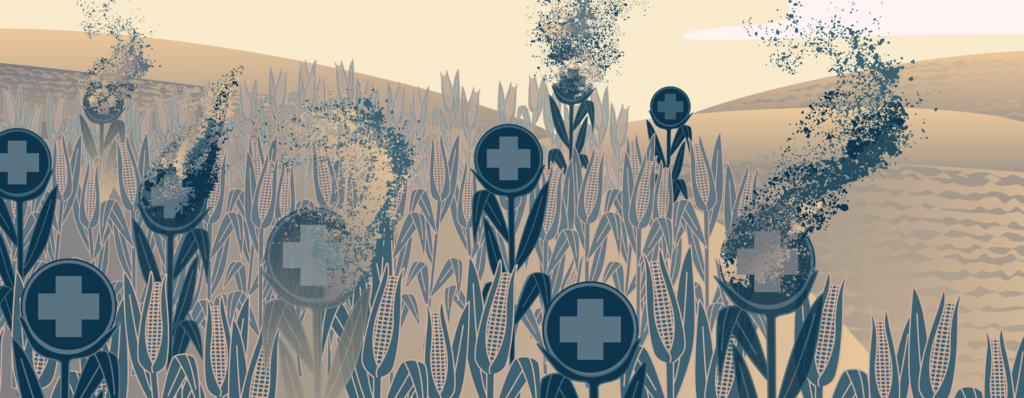Texas has 147 rural hospitals with unique needs and challenges. About 15% of Texas’ population is rural, including 586,000 rural Texans without health insurance. Compared with their urban counterparts, rural hospitals serve a larger proportion of older, uninsured, and publicly insured patients.

Reeling in Rural Texas
Hospitals in remote parts of the state need help from lawmakers on several fronts.
During 2022 and 2023, THA guided both state and federal policymakers toward enacting needed help for rural facilities – but those hospitals still need more.
Twenty-one rural hospitals in Texas have closed in the last decade – more than any other state – and other rural hospitals have eliminated key service lines, like labor and delivery. In 2022, a report from Kaufman Hall found 26% of Texas rural hospitals were found to be at risk of closure, compared to 16% in 2020. Today, only about 40% of Texas rural hospitals provide labor and delivery services according to the Texas Organization of Rural and Community Hospitals.
Preventing additional rural hospital closures and protecting rural hospitals’ ability to deliver high-quality care is critical now more than ever.
Protecting high-quality health care in rural communities means:
- Maintaining adequate Medicare and Medicaid reimbursement (including Medicare reimbursement for critical access hospitals at 101% of costs) and preserving Medicaid hospital supplemental payments.
- Reducing the number of uninsured Texans.
- Protecting special financing arrangements that address some of rural hospitals’ unique circumstances and challenges.
- Increasing access to telehealth and boosting broadband for remote hospital services.
- Encouraging education and workforce training incentives and funding for rural hospital staffing.
- Reducing or eliminating the impediments to care that often arise in Medicare Advantage plans, which reimburse hospitals at a lower rate than traditional Medicare and are notorious for prior authorization barriers and inappropriate care denials, and significantly impact critical access hospitals.
Recent progress
During the 2023 session of the Texas Legislature, THA pushed hard for advancements in rural health care, and lawmakers listened. Key pieces of the state budget for 2024-25 included:
- A tripling of the Medicaid rural labor and delivery add-on payment from $500 to 1,500;
- $50 million in new funds for the Rural Hospital Stabilization Grant Program; and
- An inflation adjustment that will allow rural hospitals to maintain legislatively required cost-based reimbursement.
THA also advocated strongly for the eventual availability of the federal Rural Emergency Hospital designation, which allows rural hospitals to provide emergency, observation and outpatient care while discontinuing adult inpatient care, allowing hospitals to transition away from a particularly costly level of care and stay open to serve rural communities. REH licensure became available to Texas hospitals in early 2023.
Resources
- THA Comment Letter on Proposed Federal Staffing Standards in Long-Term Care Facilities (Nov. 6, 2023)
- THA Comment Letter to U.S. House Ways and Means Committee on Improving Access to Health Care in Rural and Underserved Areas (Oct. 5, 2023)
- THA Comment Letter on Proposed Rule 23R017 – Limited Services Rural Hospital (July 17, 2023)
- KFF Report: Rural Hospitals Face Renewed Financial Challenges, Especially in States That Have Not Expanded Medicaid (Feb. 23, 2023)
- Kaufman Hall Report: The Financial Impact of COVID-19 on Texas Hospitals (Dec. 1, 2022)
- THA Comments on CMS Proposed Rule on Conditions of Participation (CoP) for Rural Emergency Hospitals and Critical Access Hospital CoP Updates (8/29/2022)
